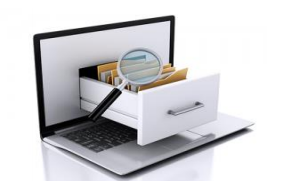Paper is the norm for the last few centuries if not millennia to capture personal, commercial and legal agreements. Before the advent of paper, agreements were embossed or engraved in clay tablets and authenticated by a seal as evidenced by archeological findings from the Mesopotamian Harappan and the Indus civilizations. In the last few decades we have seen electronic records slowly but surely replacing the paper records.
Starting with email for personal and commercial correspondence, electronic records are now accepted for most transactional records like invoices, bank statements and alike. However, where assets of enduring value are involved as in real estate or in the corporate world, electronic records for evidencing ownership and major decisions have had relatively low acceptance due to the long history of paper records in human civilization.
Electronic Records
The advent of 21st century has seen most countries including India take significant initiatives to promote acceptance of electronic records. Following the UN resolution passed in January 1997 that adopted Model Law on Electronic Commerce, the Information Technology Act, 2000 was enacted in India. Its objectives were three-fold:
1. Provide legal recognition for transactions carried out by means of electronic data interchange and other means of electronic communication,
2. To facilitate electronic filing of documents with the Government agencies, and
3. To amend the Indian Penal Code, the Indian Evidence Act, 1872, the Banker’s Book Evidence Act, 1891 and the Reserve Bank of India Act, 1934 and for matters connected therewith or incidental thereto.
The Act defines an electronic record as “any data, record or data generated, image or sound stored, received or sent in an electronic form or micro
film or computer-generated micro fiche”. Examples of electronic records include: e‐mail messages, word‐processed documents, electronic spreadsheets, audio files, digital images and databases.
In addition to defining an electronic record, the Act also explicitly provides legal recognition for electronic records by providing an all-encompassing mandate in Section 4 which states that “where any law provides that information or any other matter shall be in writing or in the typewritten or printed form, then, notwithstanding anything contained in such law, such requirement shall be deemed to have been satisfied if such information or matter is–
(a) rendered or made available in an electronic form; and
(b) accessible so as to be usable for a subsequent reference. “
Electronic Records in Company law
Section 120 of the Companies Act, 2013 provides that any document, record, register, minutes etc. that is required to be kept by the company or allowed to be inspected or copies to be given can be kept in electronic form in such form and manner as prescribed in the rules.
Rule 27 relating to maintenance of records in electronic form specifies that:
1. the format should be as prescribed,
2. reference of the Act or Rules under which the records are maintained should be given,
3. it should be capable of being read, retrievable and reproducible in print form,
4. it should be capable of being dated and signed digitally.
Further Rule 28 on security of electronic records provides a long list of conditions designed to protect its attributability, integrity and
authenticity. To list, they are:
1. designate an officer of the company responsible for maintaining it,
2. Protect it from unauthorized access, alteration or tampering,
3. Ensure against loss or damage or failure of the media,
4. Ensure systems are adequately secure to ensure their validity, reliability and consistent performance,
5. Ensure system can identify invalid and altered records
6. Ensure it is accurate, accessible, and capable of being reproduced for reference later;
7. Ensure at all times it is capable of being retrieved to a readable and printable form;
8. ensure that it is kept in a non-rewriteable and non-erasable format like .pdf version or some other version which cannot be altered or tampered;
9. Ensure to take backup periodically at least once a day and keep it in a safe and secure place,
10. Limit the access to it to only authorized persons who are performing work of the company
11. Ensure any reproduction of non-electronic original records in electronic form is complete, authentic, true and legible when retrieved;
12. Arrange and index the records in a way that permits easy location, access and retrieval of any particular record; and
13. Take necessary steps to ensure security, integrity and confidentiality of records.
Given the reality that looms large in acceptance of electronic records in the 21st century, companies that willingly embrace electronic records can leverage multiple advantages. The two significant gains among many others are of anytime anywhere access to records and the ability to use data entered in one place for multiple purposes thereby enhancing productivity by eliminating duplicate data entry and eliminate errors thereby saving on costs. Another significant benefit of enhanced productivity is that free time is created by eliminating clerical work that can be used for intellectual work that adds significant value to the company.


Leave A Comment